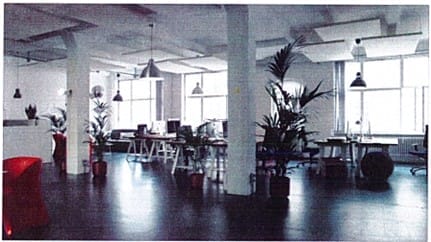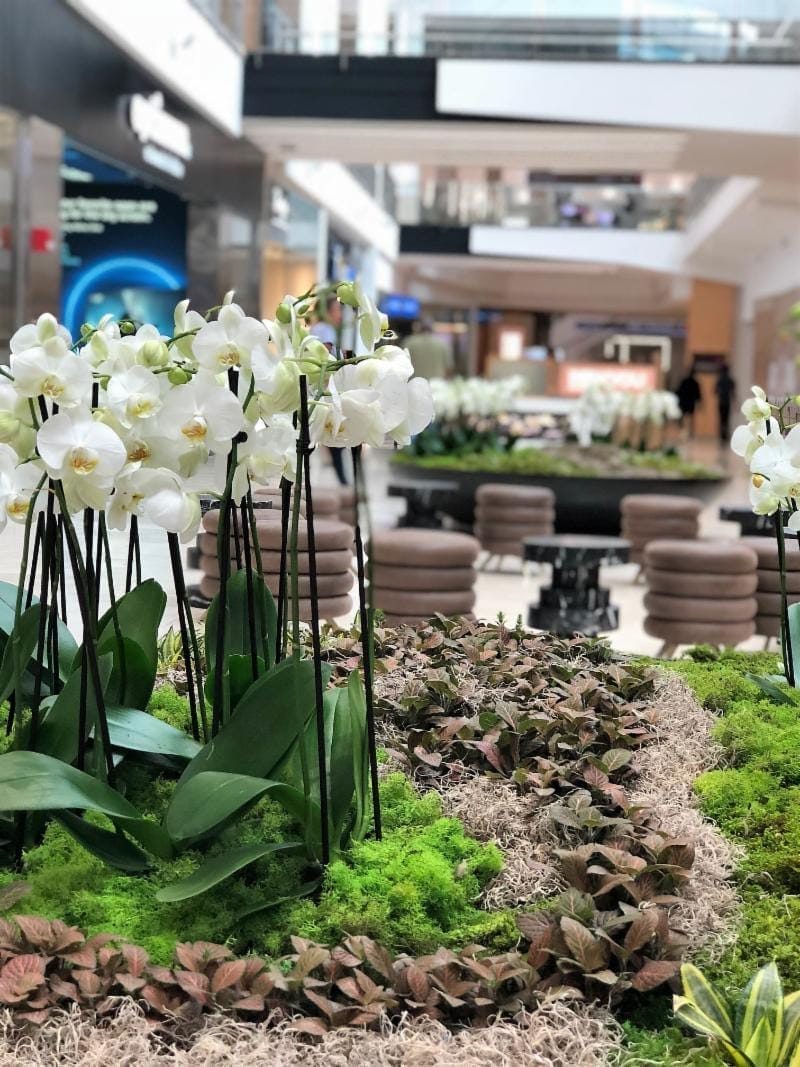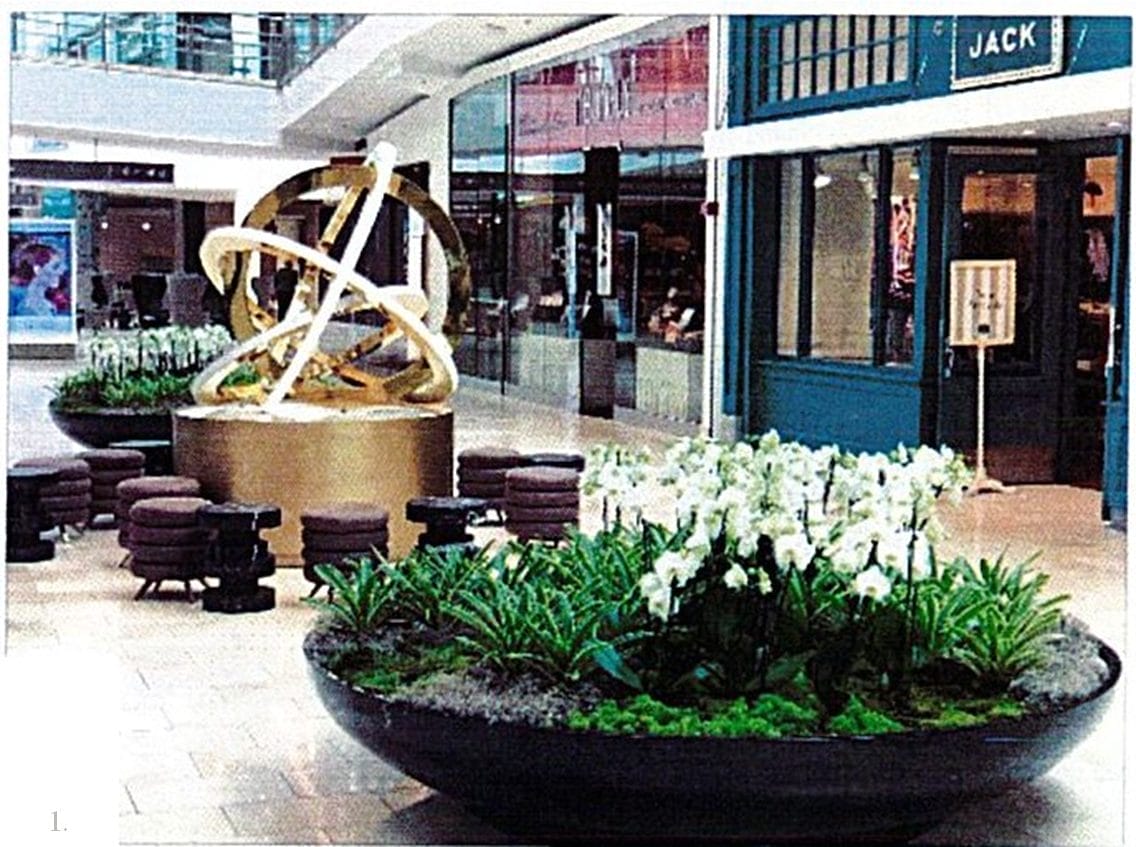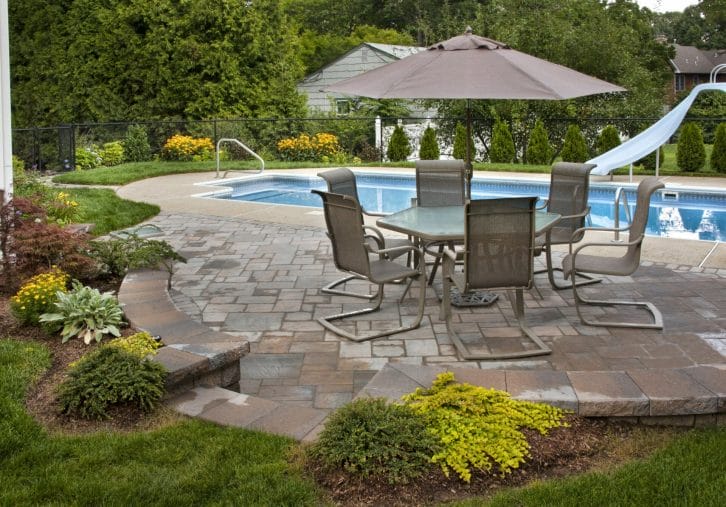Landscaping: Not Just a Warm Weather Friend
The development of a beautiful landscape can add aesthetics and other values to the interior and exterior of any company. […]
Today’s office and commercial business layouts emphasize fitness, comfort, productivity and retention – is your facility answering the call?
Low unemployment, booming commercial construction, and high-flying retailers competing with Amazon are dominating the business headlines. On the management side, the focus in business journals is on managing millennials, insurance costs, and interest rates.
 Less common is the discussion about creating business environments, office workspaces, hotel lobbies, and conference centers that not only attract top-level talent but also encourage retention and generate word-of-mouth credibility, signaling that your business is the place young job seekers want to explore.
Less common is the discussion about creating business environments, office workspaces, hotel lobbies, and conference centers that not only attract top-level talent but also encourage retention and generate word-of-mouth credibility, signaling that your business is the place young job seekers want to explore.
It’s about more than just having the right address in an attractive industry. Enlightened business owners and property managers are exploring various approaches to create not just work environments but lifestyle settings that appeal to today’s workforce. With unemployment rates holding at 3.9%, business owners need to tailor their approaches to discovering and hiring quality employees.
Much has been written about the mindset of today’s job seekers. They are as talented and hardworking as previous generations, but they crave workplace nuances that blend their professional talents with their personal interests. The desire to feel in control of their surroundings is instrumental in their decision-making.
Health and wellness, from a diet, physical, and medical perspective, are promoted extensively with regard to diet apps, fitness trackers, and our aging population. However, information has been scarce on the energy and health benefits derived from working in a city with ample green space and spending working hours in an office that values the well-being of individuals through a sincere interest in improving indoor air with green plants, natural lighting, and comfort.
A new trend in offices and public spaces in hotels, healthcare facilities, and retail outlets across the country can meet the needs of both employers and employees. It’s called biophilic design.
Biophilic design is the inherent human inclination to connect with nature. Consider this: children grow up playing outdoors; snowbirds flock to the south to escape winter and enjoy the outdoors; and 9-to-5 workers look forward to spending their leisure time in their yards and neighborhood parks. This inclination is natural to people and is quickly becoming a must-have design element in public spaces.
 Today’s trend of biophilic design goes much further than simply bringing plants into the office. The logic behind the movement is that people feel more at ease surrounded by nature than in a sterile work environment. Employees want to surround themselves with the sights and sounds of a park, garden, or nature walk rather than the constant clicking of a keyboard or conversations from pop-up meetings. Biophilic design inspires creativity among employees and creates an inviting workspace for team collaboration. The concept of biophilic design requires:
Today’s trend of biophilic design goes much further than simply bringing plants into the office. The logic behind the movement is that people feel more at ease surrounded by nature than in a sterile work environment. Employees want to surround themselves with the sights and sounds of a park, garden, or nature walk rather than the constant clicking of a keyboard or conversations from pop-up meetings. Biophilic design inspires creativity among employees and creates an inviting workspace for team collaboration. The concept of biophilic design requires:
To gain an advanced understanding of biophilic design, a team from Pinnacle V—a nationwide peer group—traveled to Seattle last spring with other interior industry professionals to visit some well-known businesses featuring innovative interiorscapes and biophilic designs.
Pinnacle V, which includes North American businesses like Raimondi Horticultural Group, Buckingham Greenery, FosterPlants, Greenery Office Interiors, and Plantscapers, had the opportunity to tour the campuses of Amazon, Facebook, Microsoft, Starbucks Reserve, and the Gates Foundation. They saw first-hand the interior plant designs and workspaces and had the chance to talk with the creative minds behind the concepts, learning the intricacies of designing employee-friendly workplaces.
Bringing nature indoors makes perfect sense for today’s business environment, workers, and business growth. Why? Because it offers the following health and lifestyle benefits:
Additionally, consider what it’s like to return to the office after a weekend of outdoor activities surrounded by trees and green space. It can be depressing, especially if the office consists of drab divider walls and stark interior colors. Such an environment can have a short- and long-term negative impact on office employees or hotel guests, as people are naturally attracted to designs, interiors, and everyday spaces that make nature and plants a key focus.
Biophilic design is revolutionizing commercial building interior design, and it’s a trend that’s here to stay. On the surface, it may seem simple, idealistic, or a fad to appease today’s workforce. However, that couldn’t be further from the truth, as increasingly, commercial buildings around the world are becoming greener.
The possibilities with biophilic design are endless. Living walls, moss walls, plant-filled lunchrooms, succulent plants, and indoor water features are some of the core elements that can be incorporated into a variety of commercial spaces, from office buildings and healthcare facilities to hotels and retail outlets.
Non-traditional workspaces have become the norm, thanks in part to the millennial generation. Instead of traditional, stale, and antiseptic designs, today’s office layouts are becoming warmer and more inviting, much like your home.

Green offices (biophilic designs), the use of artificial intelligence, acoustic furniture and rooms, and “Coffices”—spaces that are part coffee shop and part office where employees can work while enjoying a latte and a bagel—are becoming the norm.
Today’s workspaces must provide space for employees to work collaboratively and think creatively. These are baseline amenities and perks that young professionals look for when considering where to work. Dynamic spaces (hint: more than a desk, chair, four walls, and a pencil sharpener) are desirable. Think of workspaces as movable, fluctuating, and transformational to meet the needs of a team meeting, after-work gathering, or space conducive to research or writing.
We spend 90% of our time indoors, either working or “living,” and 85% of us live in urban areas where green spaces can be at a premium. Indoor plants can easily and economically counteract the negative effects of city living and working.
Indoor spaces can be designed to improve and positively impact the mood, nutrition, fitness, and productivity of employees, guests, or just about anyone visiting your site. Ignoring design trends that are the centerpiece of the WELL Building Standard™ can lead to challenges in retaining employees and growing your business.
Why Are WELL Buildings a Valuable Resource for Your Company and Employees?
The many benefits of the WELL Building Standard support the idea that employees prefer working—and generally being—in a natural or nature-based setting over stark, drab interiors made of cement and other hardscape materials that dominated design thinking in years past.
Simply put, adding plants to the workplace significantly reduces stress, health concerns, and employee absences. This is not just a trend or fad; overwhelming research supports it. Studies clearly show that employees respond to natural interior break-out workspaces and social spaces, leading to improved concentration, confidentiality, collaboration, and creativity.
The WELL Building Standard includes the following seven attributes:
The Positive Connection Between Plants and People
These components illustrate the distinct connection between people and connectedness to live plants, leading to:
The WELL Building Standard uses design strategies that promote the mental and psychological health of the people living, working, and sleeping indoors. It also reflects a commitment from property managers and building owners to improve health and well-being aspirations in a meaningful way.
 Why should property managers and building owners adopt these standards?
Why should property managers and building owners adopt these standards?
Quality interior environments include air and water standards. Why are these two standards important to building health?
ROI from WELL Buildings
Commercial building owners and property managers are seeing a return on investment within a year after implementing WELL standards.
Why nourishment and light are important to creating a quality indoor environment?
 Additionally, fitness and comfort are key considerations throughout commercial buildings, not just in the gym.
Additionally, fitness and comfort are key considerations throughout commercial buildings, not just in the gym.
 We’ve shared with you the key standards that are instrumental to incorporating the WELL Building Standard, biophilic design, and indoor plants within the indoor workspaces of commercial buildings, hotels, and related indoor spaces. Indoor spaces are not just for work and meetings; they’re central to the health and well-being of people, as an inordinate amount of our time is spent indoors.
We’ve shared with you the key standards that are instrumental to incorporating the WELL Building Standard, biophilic design, and indoor plants within the indoor workspaces of commercial buildings, hotels, and related indoor spaces. Indoor spaces are not just for work and meetings; they’re central to the health and well-being of people, as an inordinate amount of our time is spent indoors.
Commercial building owners and property managers are seeing a return on investment within a year after implementing WELL standards. The opportunity to contribute to the creation of quality indoor workspaces that support the daily and long-term sustainability and well-being of individuals should be at the core of interior efforts.
As a member of the Green Plants for Green Buildings organization, the Raimondi Horticultural Group employs an experienced team of designers who understand current guidelines and recommendations for quality interior environments, including air and water standards.
Commercial building owners and property managers are seeing a return on investment within a year after implementing WELL standards. Every day, the Raimondi Horticultural Group implements standards from the WELL to promote and improve the health and well-being of individuals in the built environment.
Visit the Raimondi Horticultural Group for expert advice on beautiful interiorscapes and exterior landscapes that will get you started on your path to an improved working environment.
Sources:
Want to know how we can help you?

The development of a beautiful landscape can add aesthetics and other values to the interior and exterior of any company. […]

We hope you’re enjoying the warmer weather! As temperatures rise, it’s crucial to ensure your plants remain healthy and vibrant. Raimondi Horticultural Group offers a range of services to protect your plants from summer stress. Here’s how we can help: Expert Watering Solutions Irrigation Systems: We install and maintain systems that deliver water directly to […]

10 yard projects to complete in September Read the original post here at TopTenReviews 1. Mulch fall leaves to provide nutrients The fall season is a good time to think about prepping your garden for next year’s growing season. And Christopher S. Raimondi, CEO and president at Raimondi Horticultural Group in Ho-Ho-Kus, New Jersey, […]